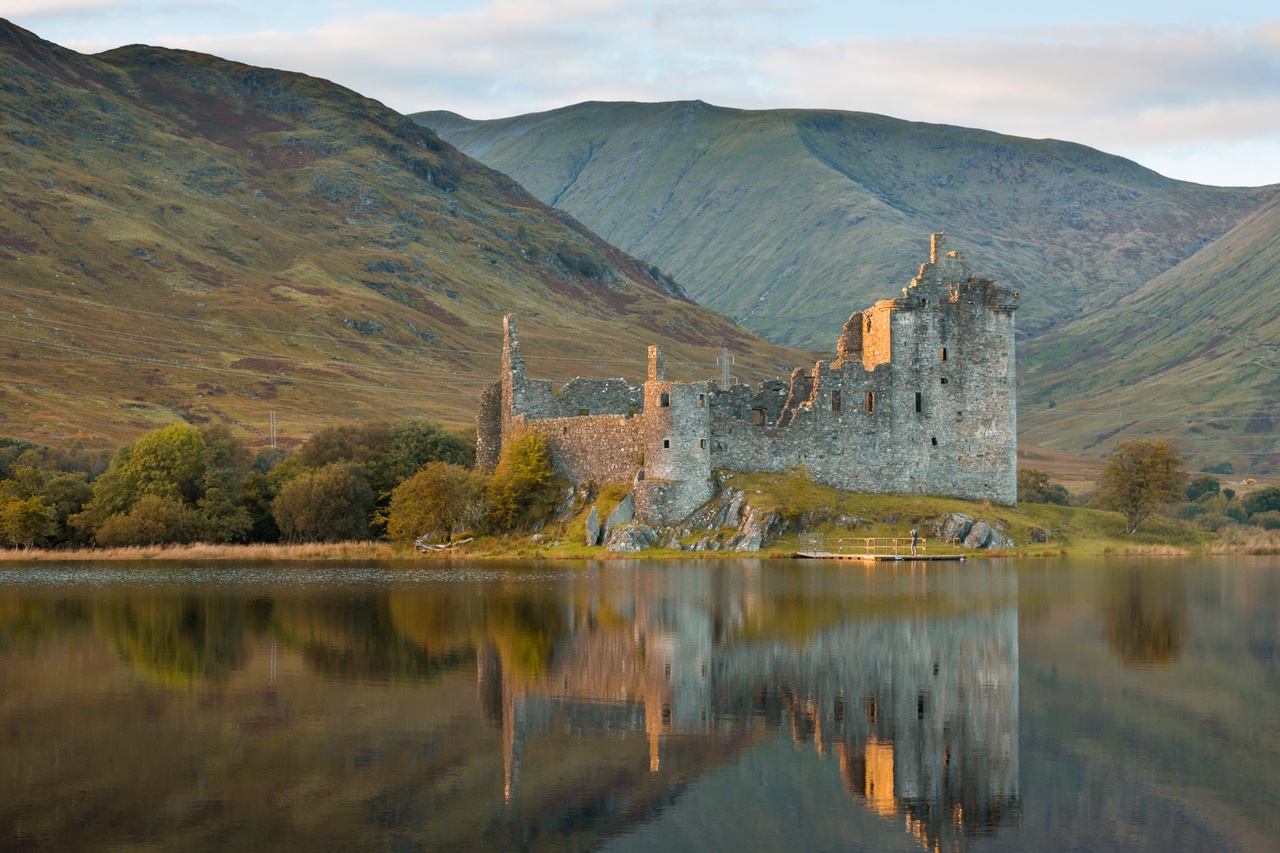Argyll (sometimes also called Argyllshire) is one of the most diverse and beautiful counties in Scotland. It sits on the country’s western seaboard, where long sea lochs penetrate deep into the interior and mountains tumble down towards fertile glens. The name Argyll comes from the Gaelic Earraghaidheal, meaning the coastline of the Gaels. It can truly claim to be the cradle of Scotland, for this was at one time the kingdom of Dalriada, founded by the Scotti who originally came from Ireland in the 6th century. Here, at the fortress of Dunadd,
they established their capital. From Dunadd, in AD843 Kenneth MacAlpin, King of Dalriada, set off towards Scone in Perthshire (taking the Stone of Destiny with him) to claim the throne of the Picts through his mother’s family,
thus uniting the two great northern kingdoms and creating an embryonic Scotland, at that time called Alba. In the 11th century, the Lothians (centred on Edinburgh) and Strathclyde (centred on Dumbarton) were absorbed, and Scotland as we largely know it today was formed.
The other great Dalriadan centre was at what is now Dunstaffnage, north of Oban. The site is nowadays occupied by Dunstaffnage Castle, one of the most spectacular fortifications on Scotland’s western seaboard. And the 12th-century Castle Sween, on the shores of Loch Sween, is reckoned to be the oldest surviving stone built castle on the Scottish mainland.
Though it has attractive towns, such as Oban, Lochgilphead, Inveraray and Campbeltown, Argyll is sparsely populated.
There are few clogged highways (though Oban can get very busy in the summer Argyll months), and driving is a pleasure. The climate is mild, thanks to the Gulf Stream, and the place has many fine gardens to explore, such as Ardkinglas, Crarae and Arduaine, some with palm trees and other species you would not expect to thrive so far north. Man has lived in Argyll for centuries. Around Kilmartin there are cairns and standing stones built long before the ancient Egyptians built the pyramids.
A museum in the village of Kilmartin itself records the history of the area, and explains the many cairns, standing stones, stone circles, graves and henges that abound in the area. The Argyll coastline is rugged and rocky, though there are some marvellous, glistening beaches, which are invariably empty. And, while the landscapes are rugged and romantic, there are also lush meadows and farmlands where heavily-horned Highland cattle can be seen. The island of Bute, in the Firth of Clyde, also forms part of Argyll. Along with Arran and the Cumbraes, it used to form the county of Bute, but local government reorganisation in the 170s meant its demise as an administrative unit,
sharing out its islands between Argyll and Ayrshire. That great peninsula known as the Mull of Kintyre, which hangs down into the Atlantic like an arm, is also in Argyll. This is a remote part of Scotland. It forms part of the mainland yet is as isolated as any island. Though Glasgow is only 60 miles from Campbeltown as the crow flies, it takes the average driver three or four hours over twisting, loch-girt roads to reach it. This is the area made famous by Sir Paul McCartney’s song Mull of Kintyre, where he sings of mists rolling in from the sea.


